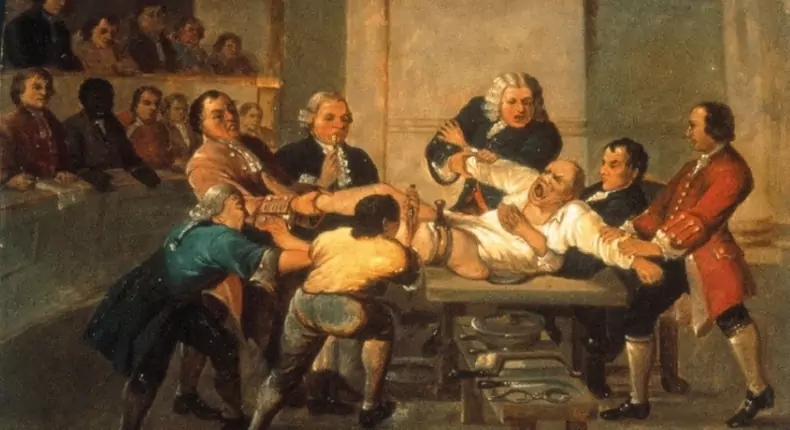By Frank Kamuntu
October 16th is World Anaesthesia Day and people globally celebrate this amazing invention by discussing its history.
A surgeon was a butcher before anaesthesia. At University College Hospital in London, a surgeon named Robert Liston accomplished a procedure that became well-known for its speed and accuracy. Surgeons like Liston used knives in the early 19th century to cure patients, but because of their swift movement, mishaps happen.
He reasoned that a person would feel less agony if he cut them more quickly. He could amputate a limb in 25 seconds, but there was a one-in-six chance that the patient would not survive. The rapidity of the treatment provides advantages, such as lowering the shock of surgery and decreasing exposure to infection.
Even Liston would generally prefer not to do surgery because the likelihood of a torturous death was very high.
The need for pain management strategies emerged as surgery became increasingly difficult. Some doctors even used hypnosis to try to keep their patients from feeling pain, but it didn’t succeed.
Then Nitrous Oxide
Dentist Horace Wells demonstrated nitrous oxide gas as a painkiller during a tooth extraction in 1845 at Boston, Massachusetts. It was a failure. A witness claimed that as the patient passed away while wailing in anguish, and “the spectators laughed and hissed.”
Then Alcohol & Sulfuric Acid
William Morton, a different dentist, discovered ether a few months later as a treatment. He created it using a toxic concoction of alcohol and sulfuric acid. In October 1846, in Boston, Massachusetts, he successfully extracted a patient’s tooth after sedating them with ether.
Followed By Ether
Ether, a gas used in anaesthesia, had several drawbacks, such as being unpleasant, explosive, and perhaps fatal when combined with Victorian gas lighting.
Chloroform Too
James Simpson, a professor of midwifery from Scotland, discovered the gas chloroform, which has since become the anaesthesia of choice for modern surgeons. However, its initial use resulted in the deaths. Hannah Greener, a 15-year-old who fainted after receiving chloroform to remove a toenail. Chloroform presented a dilemma because no one had established the ideal dosage, increasing the risk of patient fatalities, and not all surgeons were excited about administering
Modern-day Anaesthesia
Early in the 20th century, local anaesthetics were commonly based on cocaine. The only two general anaesthetics were ether and chloroform, and anaesthetist developed as a separate specialty in medicine.
World War II contributed to the creation of anaesthesia-related drugs and gases because of the development of nuclear bombs. Today’s anaesthetic is still a fluoride-added version of ether, which works without being combustible or explosive.
